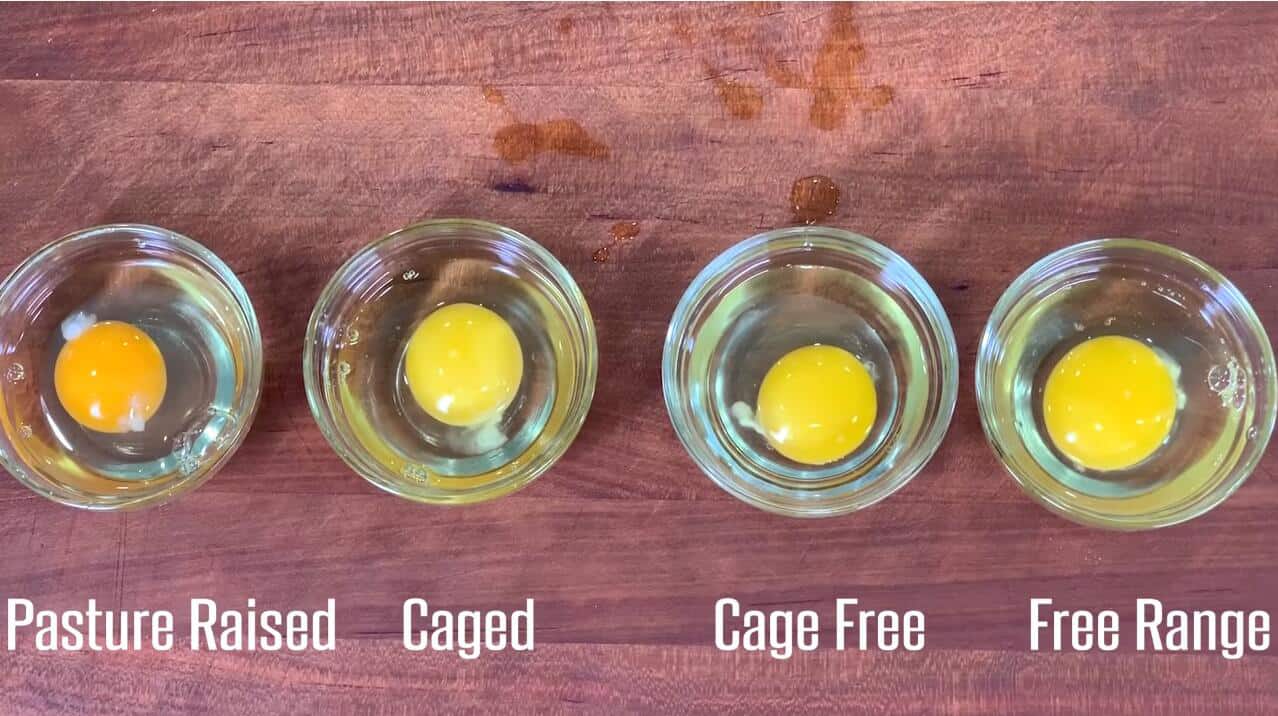A trip to the grocery store for eggs can be overwhelming. The different labels raise ethical, health, and confusing questions for you. What are cage-free vs. free-range eggs? What happened to the standards your ancestors used on the farm growing up? We’ve got these answers for you.
This article will cover
- Regular Eggs
- Cage-Free vs. Free-Range Overview
- What are Cage-Free Eggs?
- What are Free-Range Eggs?
- Effects on the Price
- So Who Wins In Cage Free vs. Free Range Eggs?
- Cage-Free vs. Free-Range Stickers
- Other Types of Egg Production
- Where to Buy
Regular Eggs
The regular carton of eggs at a grocery store usually consists of eggs laid by hens confined in battery cages. It means the caged hens only have the space of a single sheet of paper. The Humane Society of the United States says these are some of the worst abused animals in agribusiness.
They can’t perch, nest, or even do their dustbathing. It means they can’t properly groom themselves and even ward off diseases. Many people morally oppose this type of raising of hens.
Cage-Free vs. Free-Range: The Big Debate
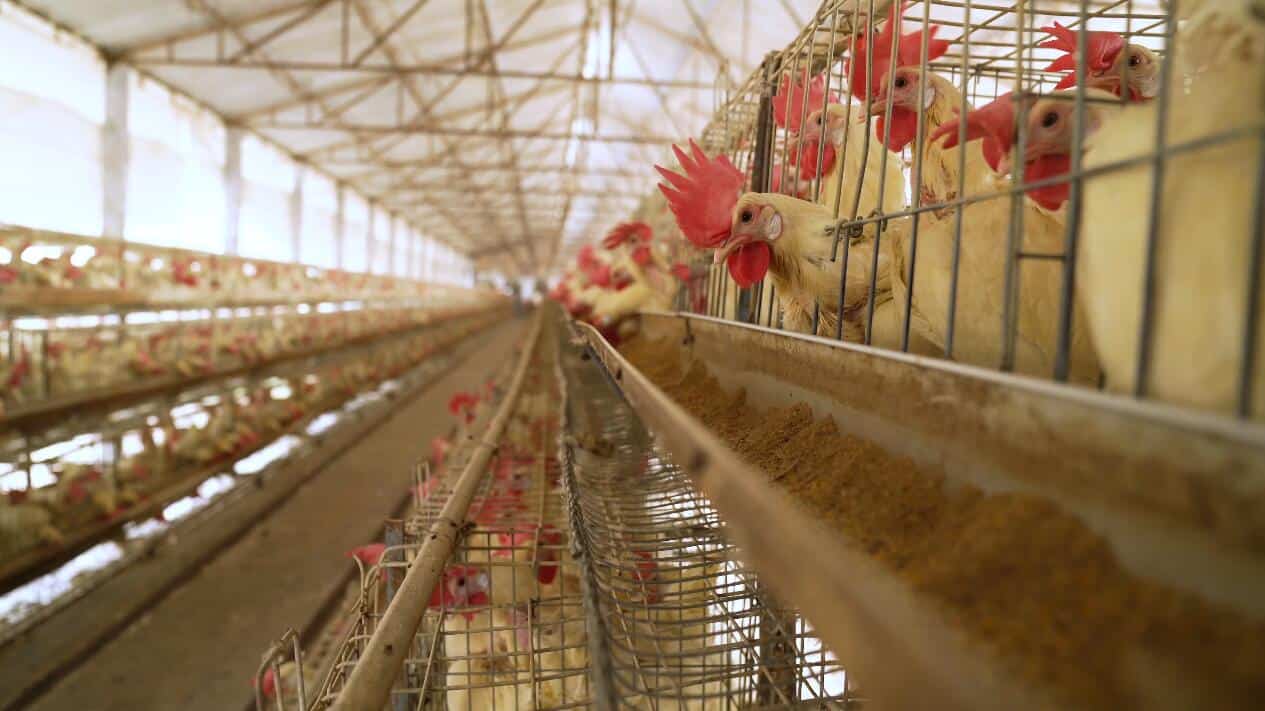
Cage-free vs. free-range eggs is a huge debate among millions in the United States. Many people agree hens shouldn’t be in tiny confined spaces. Many states have gone to cage-free and free-range chickens. Bills are being passed nationwide requiring egg producers to give hens more space.
In one bill, industrial egg farmers could not confine hens to any area smaller than one square foot per hen. Though most people agree hens should have more space to lay their eggs, when it comes to cage-free vs. free-range, it seems many people have differing opinions. Each side has pros and cons, but it’s up to each consumer to decide which is best in their eyes.
When it comes to egg quality, there may be some differences between cage-free and free-range eggs. These differences can be associated with the distinct farming systems and the environment they provide to the hens. Here is a breakdown of how various factors can impact egg quality:
- Egg Size and Number: Not necessarily dependent on any farming system, the size and number of the eggs can rely so much on how the hen is maintained. Free-range and cage-free can have more room to roam, leading to better exercise and larger eggs.
- Nutrition: The diet of hens plays a vital role in determining the nutritional composition of their eggs! Both cage-free and free-range hens receive proper nutrition through commercially manufactured feeds. However, free-range hens have access to outdoor areas where they can forage on insects and vegetation, offering them a chance to diversify their diets.
- Omega-3 Fatty Acids: The feed consumed by chickens determines omega-3 fatty acid content, which ultimately reflects elevated levels within the respective hen’s egg production. Free-range chickens can have more of this acid as they can access diverse fruits and vegetables through foraging.
What are Cage-Free Eggs?
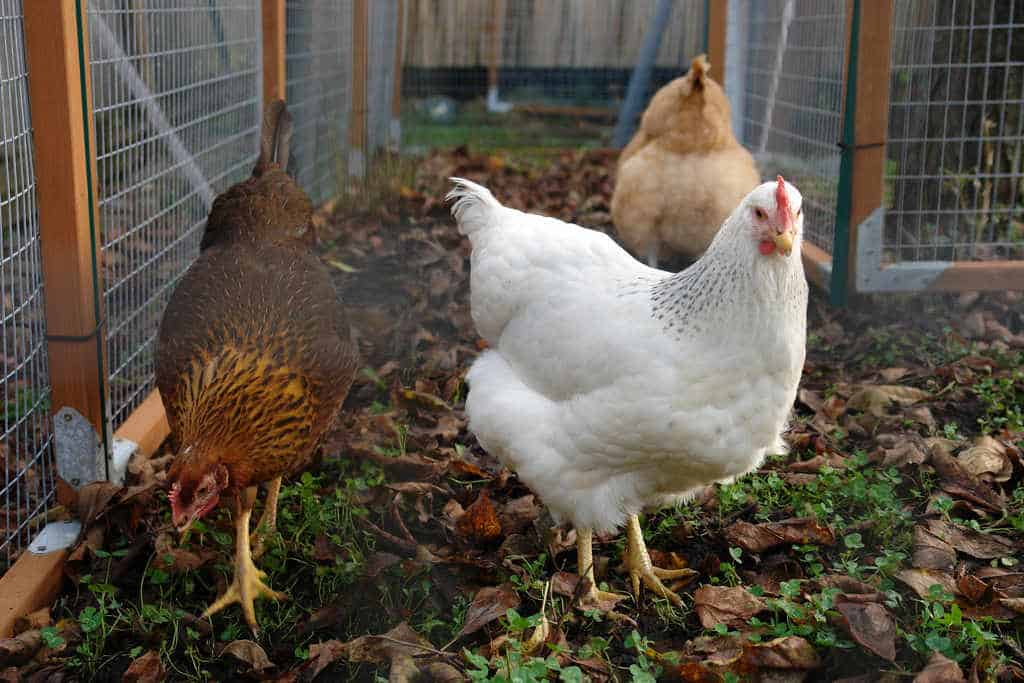
What does it mean to be “cage-free” for a chicken? The USDA regulates cage-free hens. Basically, it simply means the hens do not live in cages. This doesn’t mean they’re specified to live in a certain amount of space or even see the outside of a barn. It means they live outside of a tiny cage.
The United Egg Producers (UEP) Certified Cage-Free program states that “cage-free” means chickens can roam vertically and horizontally in their space. They must have at least one square foot of floor space.
The American Humane Certified program states that for hens to be considered ‘cage-free,’ they should not live in cages, and each must have at least 1.25 square feet of floor space. They also need to have access to nesting boxes and a perch.
Different Cage-Free Systems
Cage-free hens usually have different types of homes. Overall, they’re all fed the same thing on a natural diet. They are typically cared for in the same way; they just live in different types of cage-free homes. They get to roost, bathe and nest.
Many people need to learn that there are different types of cage-free systems on various farms. Some farmers go for multi-tier aviaries. These are barns with other floors so the chickens can go up and down different heights.
Some have barn systems, including a large flock of hens that get an entire barn to themselves. They have food and water along with perches, nests, and sawdust for scratching. They earn about triple the space given to hens in battery cages.
The main idea behind hens not having tight confinement areas is they can roam freely within a larger space than in a tiny cage. They get to exhibit their natural behaviors.
What are Free-Range Eggs?

The USDA also regulates free-range chickens. The hens must be given access to the outdoors. The rule says these hens must have access to a screened-in porch with at least two square feet of outdoor space per hen.
Although the regulation states they must have access to the outdoors, it doesn’t specifically require that they have to go outside. Some larger chicken producers interpret this as providing small paved patches of ground or having open windows for ventilation, although it doesn’t necessarily mean the chickens will roam outside. For most farmers, however, free-range means the chickens can roam freely.
Outdoor Access And Recreation
Free-range chickens usually have proper access to the outdoors. They’re able to roam freely in large enclosures. They often wander along natural pastures and farms. They can hunt and peck for extra food.
Some chickens hunt for their food during the day. Many farmers even give them hay bales and farm equipment so they can create their own little homes and recreation areas. They like to climb on this old equipment and bathe themselves.
Effects on Price
One of the most significant differences between cage-free vs. free-range chickens is pricing. The most inexpensive eggs at the store are usually the conventional cages. It’s the least expensive way to produce eggs. There is not as much labor involved in this type of raising hens.
The hens also do not eat as much. The more space a hen has to live, move, and do their natural things, the more it costs to raise them. This means these eggs are usually more expensive to produce.
So Who Wins In Cage Free vs. Free Range Eggs?
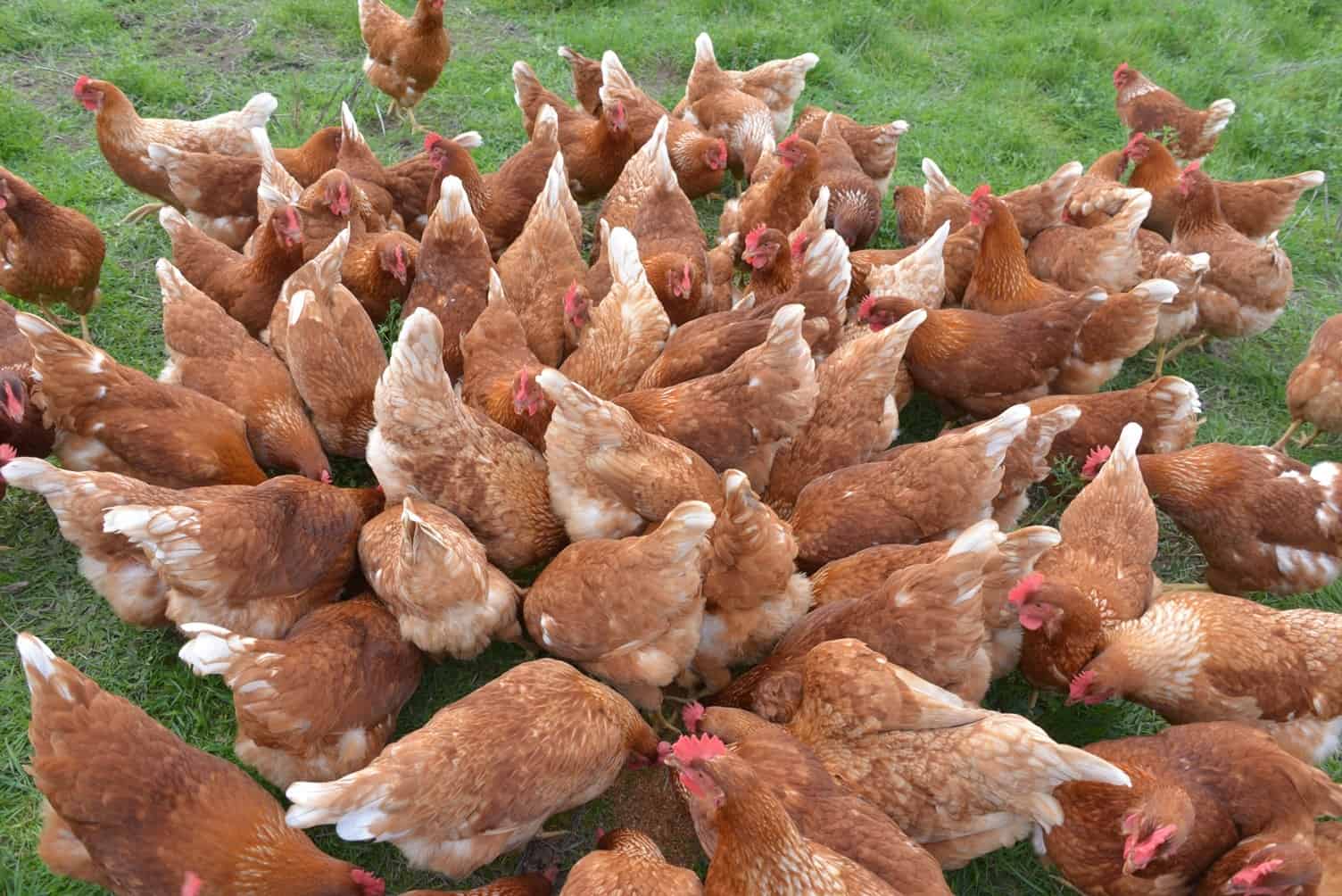
Is there a real winner when it comes to cage-free vs. free-range chickens? When you get down to the exact definition, the titles are just the environment in which the hens are housed. The consumer may not even know how much each farmer went to ensure the living styles were “good” for the chicken.
The consumer may never know if they’re making the most ethical decision. The USDA states that they have not established any definitive scientific data indicating a nutritional difference in the eggs based on housing conditions. However, some studies suggest there could be variations. It means it’s up to consumers to decide which is best for their household.
Cage-Free vs. Free-Range Stickers
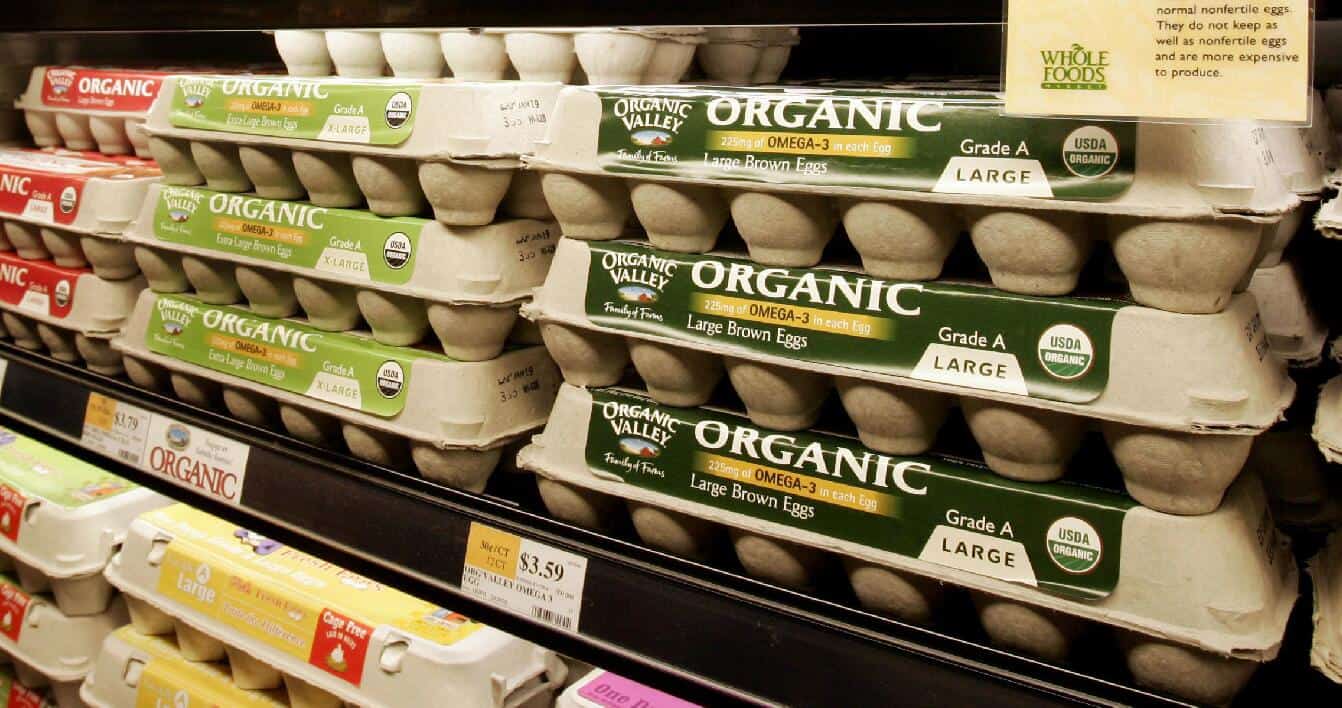
There are a million different stickers on all of the other cartons at your grocery store. So how do you know which stickers to even check for? You must look for certain logos to ensure you get cage-free or free-range eggs.
The Animal Welfare Approved logo is a blue and green circle with a white silhouette of a farm animal and the text “Animal Welfare Approved.” The AWA ensures producers do not cut their chickens’ beaks and don’t starve their birds. Another well-known logo is the Certified Humane logo.
Certified Humane bans forced molting of their chickens. Both of these logos ensure their chickens do have outdoor access. One problem with logos and stickers is they often won’t tell you how the chickens were raised. These labels include natural, fertile, farm-fresh, and omega-3. Read the labels carefully before you decide which eggs to buy based on your ethical values.
Other Types of Egg Production

Pasture-raised eggs can also be found in many stores. If a label says pasture-raised, these hens usually have special living conditions. They must be placed on the ground or grass with vegetation for six hours daily. The USDA does not regulate them. They are given that designation by the Humane Farm Animal Care’s Certified Humane program.
They must have at least 1.8 square feet of indoor floor space each. They also must have four square feet of outdoor space each. Like other types of hens, they can also access nesting boxes and perching places.
Hens with specific diets produce organic eggs. It means they were not fed any antibiotics. These hens must live in cage-free homes and/or free-range homes. They cannot be forced to molt for better production either.
Where To Buy
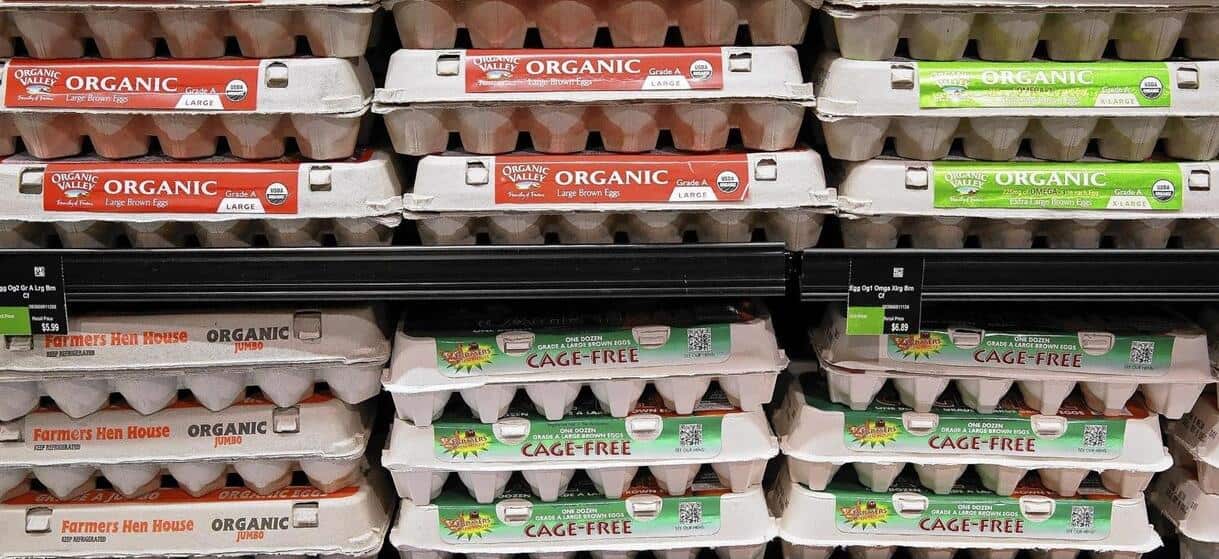
Most people buy their eggs at the supermarket, but if you want unique types of eggs, you might need to look at your local farmers’ market or a nearby farm. Many times this means you know precisely how your eggs are made. You don’t need to worry about cage-free vs. free-range eggs because you’ll have all the information right in front of you to help make your decision.
Many times, a local farm will practice rotational grazing, where different types of livestock, such as cattle and chickens, are moved from one pasture to another to promote healthier land and animals. This means the hens get to pick out their little bugs from the cow’s manure. They bring essential nutrients and help the flies stay away.
Many of these chickens get to eat insects and grass. This is unheard of in the land where chickens are raised in battery cages. These eggs may even have higher levels of omega-3 fatty acids. Many people swear cage-free and free-range eggs even taste better.
Conclusion
Overall, cage-free vs. free-range chickens have been raised in different yet the same ways. They are both regulated stricter than chickens raised in battery cages. They both have pros and cons because there are ways farmers or producers can bend the rules.
It is up to each consumer to decide cage-free vs. free-range and which is the best decision for their home. The options may seem overwhelming, but a little research can go a long way to feed your home with the best eggs for you.

Joseph Hudson has been raising chickens for over 15 years. In 2018, he completed the Agriculture & Natural Resources program at Mt. San Antonio College. He currently raises over 1400 chickens on his 7.5-hectare farm. He keeps sharing his experience on raising healthy and happy chickens on Chicken Scratch The Foundry.
